News
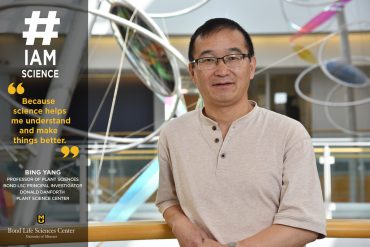
Sep. 14, 2018
#IAmScience Bing Yang
By Erica Overfelt | Bond LSC Rice ties together much of Bing Yang’s life. From his childhood in China where his father farmed the crop to more than 20 years of research on the staple, it’s more than just food. “Rice by itself is the major crop in the world,” said Yang, one of Bond LSC’s newest researchers. “It provides more than half of the population’s food. Rice is a model crop species and can be used for other crop plants. It can be applicable to other crop species since it is easy to study.” Originally from Southwestern…
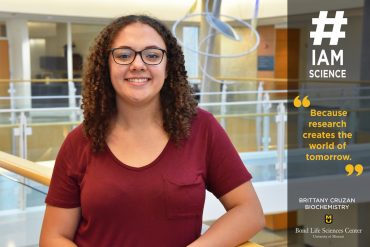
Sep. 7, 2018
#IAmScience Brittany Cruzan
By Erica Overfelt | Bond LSC When Brittany Cruzan does her laundry, she can’t stop thinking about science. “Science controls our everyday life,” Cruzan said. “Coffee, tea, the way you cut your hair, it’s all science. I’ve liked science since I was a kid. I am obsessed with knowing how things work. I don’t care why but I care for how. Cruzan applies that desire to know how things work to work in the lab. From her first semester of freshman year to now as a junior, Cruzan been in Mannie Liscum’s lab chasing the how behind the…
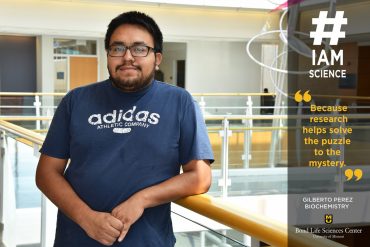
Aug. 31, 2018
#IAmScience Gilberto Perez
By Erica Overfelt | Bond LSC Research is like a puzzle, and figuring out how the pieces fit together is Gilberto Perez’s favorite part of research. “In research you have to think about the steps,” Perez said. “Most likely, I’m not going to complete the puzzle in my lifetime, but it will help someone else put a piece in it and hopefully, down the road, it will be finished.” Before coming to Mizzou, Perez had mindless jobs in high school and that’s why he likes the idea of a puzzle. He came here unsure of what he wanted…
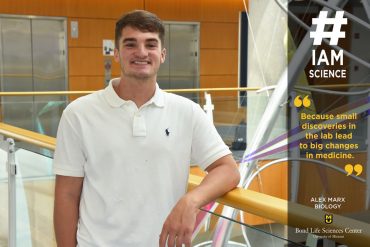
Aug. 24, 2018
#IAmScience Alex Marx
By Erica Overfelt | Bond LSC Sometimes there’s a deeper meaning behind why we do the things we do. Whether it be what we study, or research, the meaning is always there. Alex Marx always knew he would go into medicine, but didn’t expect to do research. Growing up with two parents who are in health care, and a great grandmother with Alzheimer’s Disease, medicine and certain neurological diseases intrigued Marx. When Marx came to college he became friends with Dr. Setzer, professor in Biological Sciences, who soon introduced him to research and, more specifically, Anand Chandrasekhar’s lab…
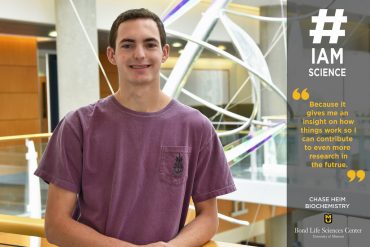
Aug. 20, 2018
#IAmScience Chase Heim
By Erica Overfelt | Bond LSC Chaise Heim wasn’t reluctant in his pursuit of science. In high school, a program called Triple E gave him his first major exposure to his desired career in the form of an internship. That led him to David Emerich’s lab in MU’s biochemistry department where he spent a cumulative 40 hours during the program. “From working there, I realized I liked the sciences,” Heim said. “I came to college and continued to work with him, but realized plant science wasn’t the direction I wanted to go, so I talked to my mentors…
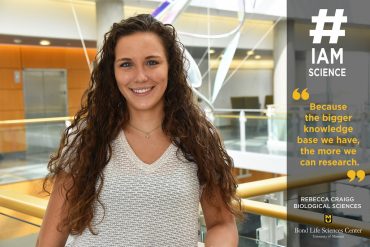
Aug. 10, 2018
#IAmScience Rebecca Craigg
By Erica Overfelt | Bond LSC Being involved in research changes perspective in and out of the lab. Senior Rebecca Craigg came to college thinking science always had an answer. “When I came in as a freshman I thought everything should work,” Craigg said. “If you do an experiment you should get a result. Now, I am not afraid to fail.” Craigg joined the Cornelison lab freshman year. As a first-generation college student Rebecca was unsure of what was in store for her. But as she grew as a researcher, she also did as a person and started…
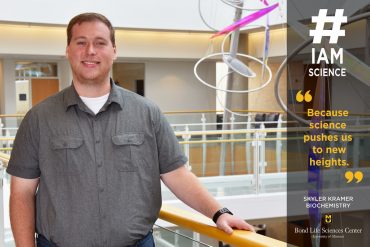
Aug. 2, 2018
#IAmScience Skyler Kramer
Senior Skyler Kramer has spent each year of college in a different lab, he currently works in the Sumner Lab at Bond LSC. | photo by Erica Overfelt, Bond LSC By Erica Overfelt | Bond LSC College is a time of finding yourself and finding what you actually want to do. For senior Skyler Kramer, he knew his first year of college. Kramer currently works in the the Sumner Lab as a summer intern, however, this is the fourth lab he has worked in since coming to MU. Kramer started out college in a biology lab…
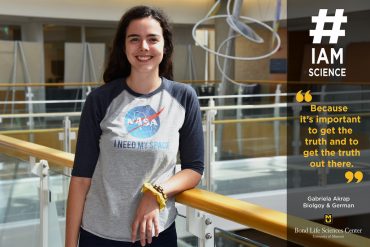
July 27, 2018
#IAmScience Gabriela Akrap
By Erica Overfelt | Bond LSC Being the youngest person in the lab has opened the eyes of this English, German and Croatian speaking undergrad. Research was not always on senior Gabriela Akrap’s mind, until Ruthie Angelovici told her to apply for REU (Research Experience for undergrads). Being accepted started two months in Angelovici’s lab this summer that expanded Akrap’s science experience. Akrap first was intimidated at first since she was younger that others in the lab, but soon came to feel comfortable. “There’s so much information and so many different projects going on…

July 25, 2018
A shift in focus: Lorson moves basic research to drug development
By Roger Meissen & Erica Overfelt | Bond LSC It takes a lot to move a discovery from lab bench to an application that can provide therapeutic benefits to those suffering from disease. Bond LSC’s Chris Lorson is making moves to bridge that gap with the start of Shift Pharmaceuticals. With its formation in March 2017, Lorson adds co-founder and Chief Science Officer of the company to his list of titles that include Bond LSC investigator, professor of veterinary pathobiology and associate dean for research and graduate studies. Shift Pharmaceuticals builds off of years of progress the Lorson Lab has…
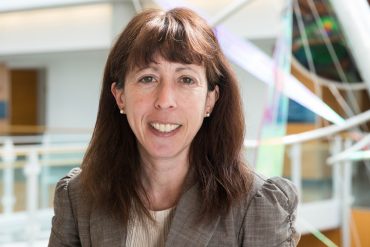
July 23, 2018
BPA research brings clarity to chemical’s influence on genes
Cheryl Rosenfeld recently worked with the FDA to study genetic effects of BPA. Her results were published in Epigenetics in July 2018. photo by Roger Meissen | Bond LSC By Roger Meissen | Bond LSC After a decade of work, Cheryl Rosenfeld is no stranger to bisphenol A (BPA), and her most recent study challenges the dangers posed by developmental exposure the chemical. Her results continue to raise concerns about how BPA can potentially turn on or off genes in animals and subsequent effects on that early exposure can have on the development and brains of…
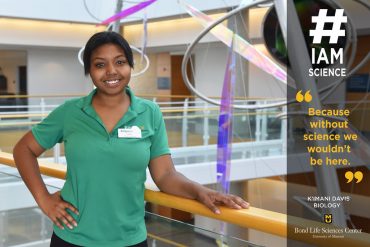
July 20, 2018
#IAmScience K’Imani Davis
By Erica Overfelt | Bond LSC From hate to passion. One class changed senior K’Imani Davis’s mind, who is now going into her senior year working in the Anand Chandrasekhar lab at Bond LSC. “I used to actually hate science, and when I say hate, I hated it,” Davis said. “Senior year of high school I took AP Bio, I loved it. I don’t know what happened, but I started to try and I liked the subject.” After Davis’s change of heart, she decided to start out at MU as a biology major, and she is now going…
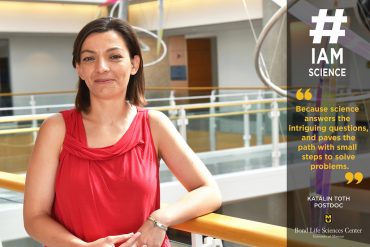
July 11, 2018
#IAmScience Katalin Toth
By Erica Overfelt | Bond LSC A chance encounter brought Katalin Toth to Mizzou. The postdoctoral fellow, first heard about MU when Gary Stacey visited University of Munich. Toth heard of a position opening up in his lab. She has now been in the Stacey Lab for six years. “I knew his work was important and well known,” Toth said. “You can almost directly apply what you find on soybeans to agriculture.” Science has led Toth from the mountains of Slovakia where she did her masters to Hungary for her Ph.D. and Germany for research. Missouri ended up…